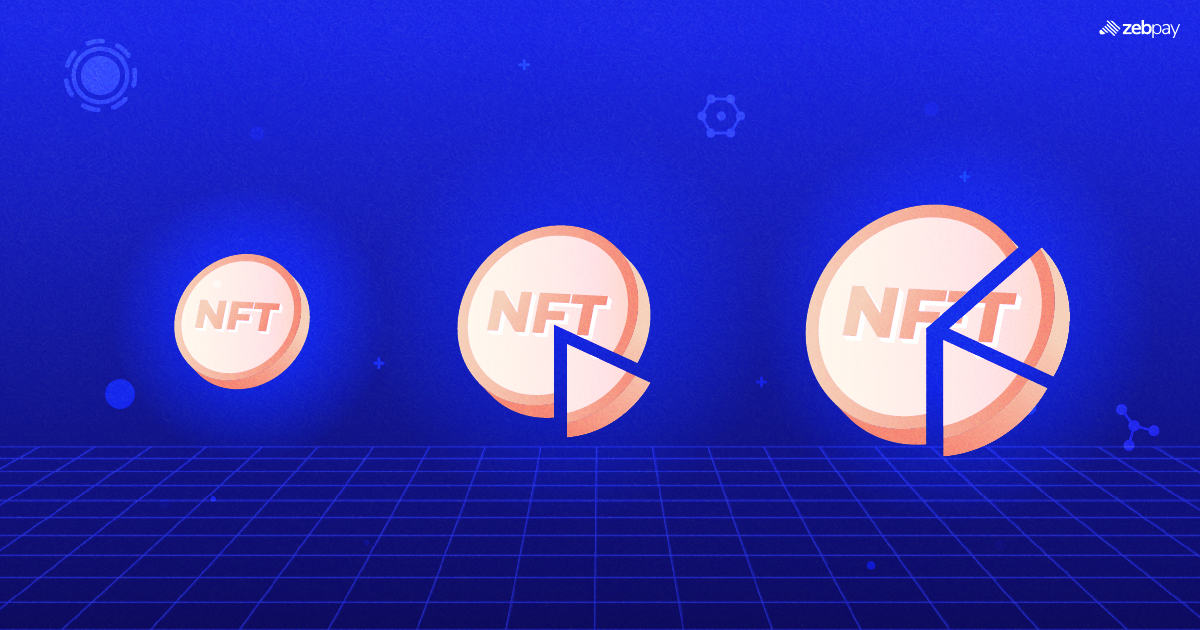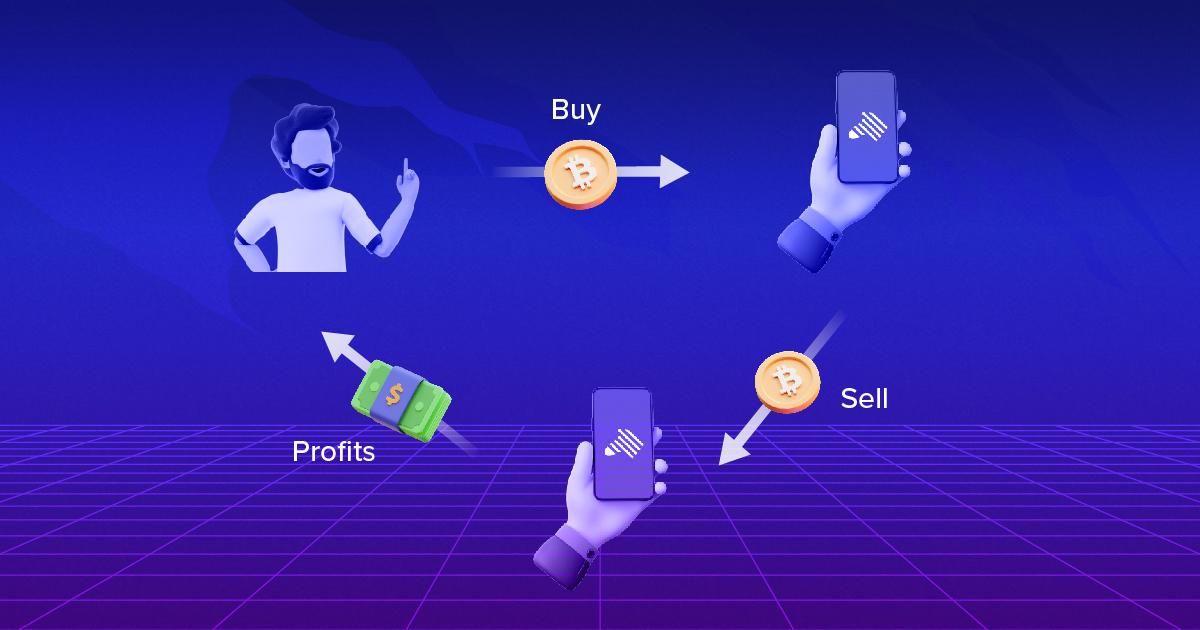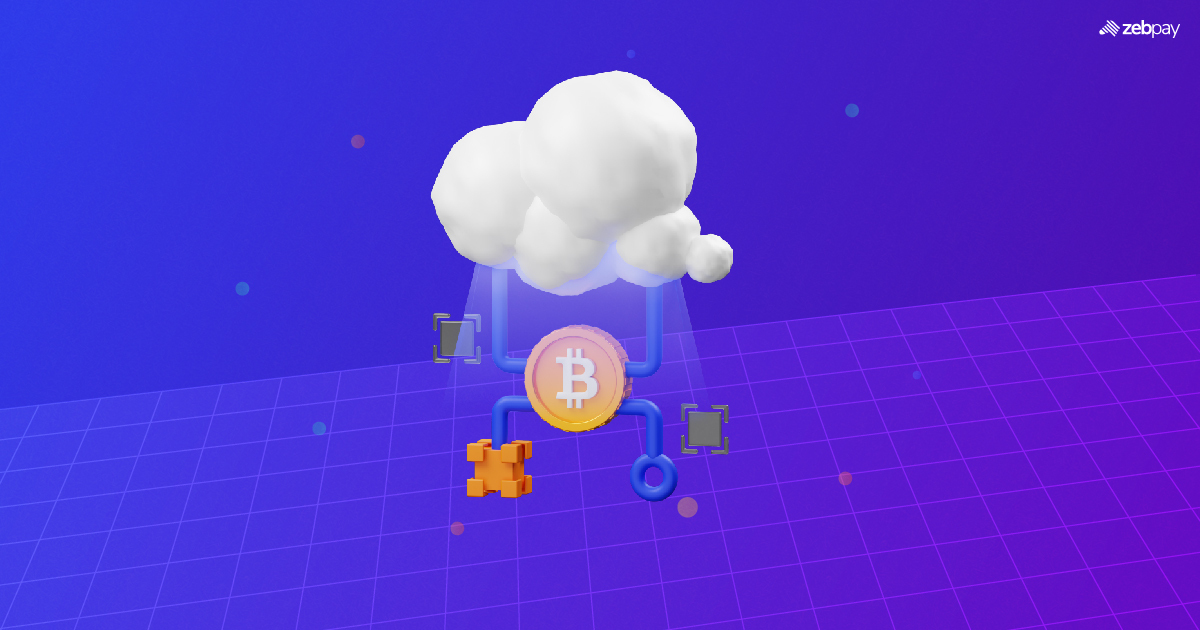NFTs have revolutionised the concept of ownership in the digital age. They guarantee the decentralisation and transparency of digital assets on a blockchain and allow you to be the exclusive owner of items. They cannot be duplicated or counterfeited. But these factors also limit what their owners can do with them. This is where the concept of fractional NFTs comes in.
Definition of Fractional NFTs
A fractional NFT is a type of NFT that is divided into smaller pieces. Each of these pieces can be purchased by a different individual, who then owns a percentage of the original asset. It, therefore, gives you a stake in a bigger pie while limiting the risk of holding a whole asset. This also opens up NFT investment opportunities for smaller investors who cannot afford the entire asset.
The Concept of Fractional Ownership and its Application to NFTs
Fractional ownership is derived from the same system as stocks in a company. Just as there may be thousands of investors in a single company, there can be several owners of a fractional NFT. Individual shares not only give investors more voting power, but also a higher share of profits.
The Benefits of Fractional NFTs
Fractional NFTs split the decision-making process over several different individuals and lower the barrier of entry to NFT ownership. This greatly increases the market for NFTs as many more individuals can now trade in them.
How Fractional NFTs Work
A fractionalized NFT is created from a regular NFT. It is simply broken down into many individual pieces, which enables multiple people to claim ownership of the same item. This is done through smart contracts that link a set number of new tokens to an indivisible original NFT.
The Process of Buying and Selling Fractional NFTs
Buying and selling fractional NFTs can be done independently from the original asset. While the tokens in a fractional NFT are linked to the main NFT, they can be traded on a secondary market easily.
For example, suppose you make an NFT called “A”. A can be bought and sold as a regular NFT at $100. Now, you convert this into a fractional NFT of 100 parts, each sold for $1. These parts are now traded separately. The price of the fractional part does not change A’s original price – this is something market factors will control for.
The Legal and Technical Considerations of Fractional NFTs
Fractional NFTs may present additional legal and ownership issues. If a fractional NFT is created by someone other than the owner of the main NFT, market factors may reduce the asset value of the original owner. This is because there will effectively be two versions of the same piece, one fractional and one whole.
Only time and experience with the market will tell how best to resolve such issues.
Examples of Fractional NFT projects
One of the most expensive NFTs of all time – Beeple’s Everydays – has also been converted into a fractional NFT. It has been divided into 100 different tokens, each of which can be purchased and traded separately.
Another example of a fractional project is the NFT collection by musician Grimes. One of the artworks in this collection was fractionalized and sold at $10 per part.
Risks and Considerations of Fractional NFTs
The Impact of Market Conditions on the Value of Fractional NFTs
While the original and fractional parts can be traded separately, chances are the price changes in one will be mimicked by the other. This is the risk that comes with trading two versions of the same instrument in a market. Thus, the risk may potentially be doubled for someone looking to create a fractional NFT.
The Potential for Fraud or Misrepresentation
The creator of an NFT project is very important for determining its value. There are many cases of fake or intentionally misleading NFT projects that associate themselves with the style or name of more popular artworks.
This problem will be exacerbated by fractional NFTs, where a different creator may fractionalize it and sell it. Alternatively, a very similar work could be fractionalized while claiming to be the same as the original.
The Uncertain Legal and Regulatory Environment for Fractional NFTs
The crypto space itself exists in regulatory limbo in many countries. Some do not have any particular laws around them while others have vague guidelines and rules to adhere to. In such a scenario, fractionalized NFTs also do not have any clear regulations to follow, which can be a challenge for many users.
Read more: 5 ways to protect your NFTs from being stolen
The Future of Fractional NFTs
Expert Opinions on the Potential for Fractional NFTs
Many analysts and experts believe that fractional NFTs can expand the market significantly
by bringing in more liquidity. This opens up many more opportunities for investment and growth in the sector. Finally, price discovery is aided by the availability of both money and more assets.
The Potential For Fractional NFTs To Be Used In A Variety Of Industries And Sectors
Currently, the use of NFTs is largely restricted to art and digital memorabilia. But with the growth of F-NFTs, these options can expand to include more customisation in gaming, better represent legal documents on a blockchain and can even be used in media streaming services.
The Challenges that Fractional NFTs May Present
As covered above, the lack of legal clarity on F-NFTs will be an obstacle in their future. The possibility of complex ownership without clearly-defined rules and regulations may result in situations that are difficult to resolve.
Final Thoughts
Fractional NFTs are a key step in the future of digital asset ownership and management. However, there are significant challenges like regulation and technical issues that must be addressed for wider adoption. But the potential of this technology is apparent and can be realised shortly.
You can learn more about crypto on ZebPay blogs. Trade confidently using ZebPay Australia.
FAQ on Fractional NFTs
How to Fractionalize an NFT?
You can fractionalize an NFT by using any smart contract that allows you to break down an ERC-721 or ERC-1155 token into smaller parts represented by ERC-20 tokens.
Where Can I Buy And Sell Fractional NFTs?
There are many platforms online like Fractional.art that allow you to trade popular fractional NFTs with ease.
What Are Some Fractional NFT Use Cases?
Fractional NFTs can be used to represent legal ownership on a blockchain, like the share of ownership of land. They can also be used to augment decision-making so more individuals determine how an NFT can be used. Fractionalization also allows for profit to be shared according to your stake.







